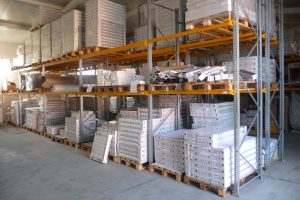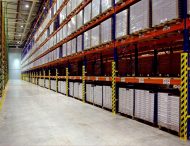The pallet has revolutionised storage and transportation, making it easy to move goods using mechanical handling. Its standardised format means it can be shipped worldwide without problems.

When it comes to storage, though, there are several different varieties of pallet racking. So, what are they and what advantages do they have for your business?
Standard Racking
This is the lowest cost option, it’s also the most common and easy to adjust to meet your needs. It can cope with varying different sizes of pallet and it’s compatible with FIFO inventory control methods. The downsides are that floor and volume usage are less effective than with other alternatives. You could make up for this with some garage shelving sourced from sites such as https://www.garage-shelving.co.uk alongside it which will help with any extra space needed and for those smaller items that you don’t want next to the large stock.
Narrow Aisle Racking
Narrow aisle systems allow better floor utilisation than standard types, thanks to smaller gaps required. Again, this type of racking is suited to different sizes of pallet and types of product. This is also a low-cost option, however the low price of the racking needs to be offset against the higher price of very narrow aisle (VNA) lift trucks.
Deepstore Racking
Deepstore or drive-in racking costs more than conventional types but offers the advantage of higher floor space utilisation, though actual rack space use is lower. It’s best suited to uniformly sized items and it requires a long reach or counterbalanced lift truck in order to operate.

Shuttle System
Shuttle system racking is similar to deepstore, but it uses a semi-automated system to move the pallets in and out of the racking. This makes it’s a more costly option, but it does allow higher usage of pallet locations than a deepstore system. Again, best suited to uniformly sized items.
Pallet Flow System
A pallet flow racking systems uses lanes on which pallets are placed and then roll forward under gravity. This is a high cost system, best suited to uniform sizes and needs pallets in good condition.
Push Back System
A push back system is similar to pallet flow but works the other way around, loads are pushed back by the lift truck and when one is removed the pallets behind roll forward, so loading and unloading is from the same side.
Mobile Racking
This is the most flexible option, using racks that run on rails, allowing for easy reconfiguration of warehouse space and high utilisation rates.



